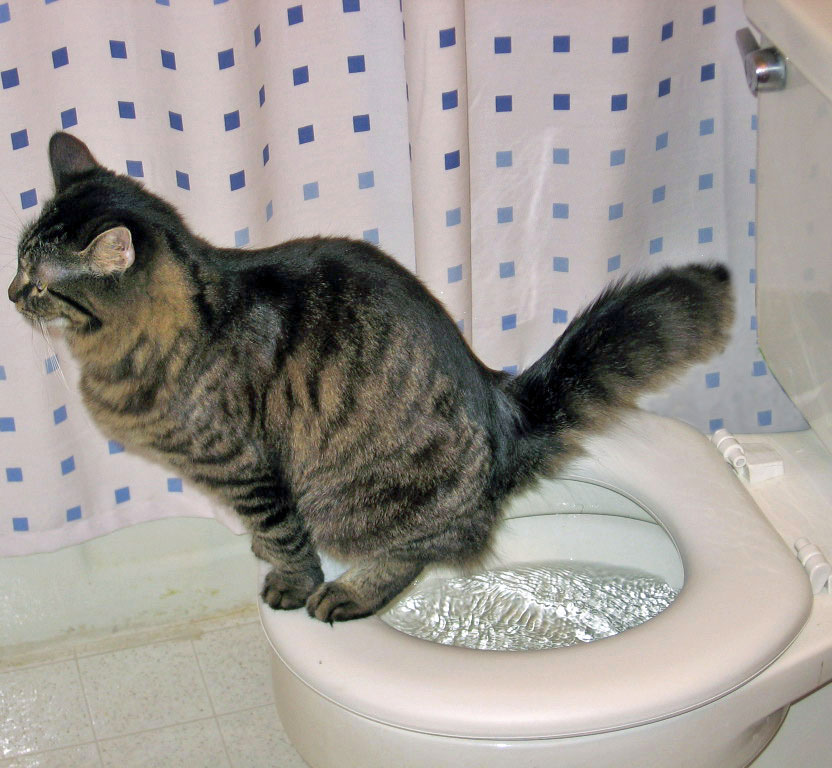How do you actually feel on the subject of How to Dispose of Cat Poop and Litter Without Plastic Bags?

Intro
As pet cat owners, it's vital to bear in mind just how we take care of our feline friends' waste. While it might seem convenient to purge cat poop down the toilet, this technique can have damaging consequences for both the environment and human wellness.
Ecological Impact
Flushing cat poop presents harmful pathogens and bloodsuckers into the supply of water, presenting a significant danger to marine communities. These contaminants can negatively impact aquatic life and concession water top quality.
Health Risks
Along with ecological issues, flushing cat waste can also present health and wellness dangers to people. Feline feces might contain Toxoplasma gondii, a bloodsucker that can cause toxoplasmosis-- a potentially extreme disease, specifically for expecting females and people with damaged immune systems.
Alternatives to Flushing
Thankfully, there are safer and much more liable methods to throw away feline poop. Think about the following alternatives:
1. Scoop and Dispose in Trash
The most common approach of throwing away pet cat poop is to scoop it into a biodegradable bag and throw it in the garbage. Make sure to use a devoted litter scoop and throw away the waste immediately.
2. Usage Biodegradable Litter
Go with biodegradable cat clutter made from materials such as corn or wheat. These clutters are environmentally friendly and can be securely disposed of in the garbage.
3. Bury in the Yard
If you have a lawn, take into consideration burying cat waste in an assigned location away from vegetable gardens and water sources. Make certain to dig deep enough to stop contamination of groundwater.
4. Mount a Pet Waste Disposal System
Buy an animal waste disposal system especially made for pet cat waste. These systems make use of enzymes to break down the waste, reducing odor and ecological influence.
Final thought
Responsible pet possession prolongs beyond offering food and shelter-- it additionally involves correct waste monitoring. By avoiding flushing feline poop down the commode and opting for alternative disposal methods, we can decrease our ecological impact and shield human wellness.
Why Can’t I Flush Cat Poop?
It Spreads a Parasite
Cats are frequently infected with a parasite called toxoplasma gondii. The parasite causes an infection called toxoplasmosis. It is usually harmless to cats. The parasite only uses cat poop as a host for its eggs. Otherwise, the cat’s immune system usually keeps the infection at low enough levels to maintain its own health. But it does not stop the develop of eggs. These eggs are tiny and surprisingly tough. They may survive for a year before they begin to grow. But that’s the problem.
Our wastewater system is not designed to deal with toxoplasmosis eggs. Instead, most eggs will flush from your toilet into sewers and wastewater management plants. After the sewage is treated for many other harmful things in it, it is typically released into local rivers, lakes, or oceans. Here, the toxoplasmosis eggs can find new hosts, including starfish, crabs, otters, and many other wildlife. For many, this is a significant risk to their health. Toxoplasmosis can also end up infecting water sources that are important for agriculture, which means our deer, pigs, and sheep can get infected too.
Is There Risk to Humans?
There can be a risk to human life from flushing cat poop down the toilet. If you do so, the parasites from your cat’s poop can end up in shellfish, game animals, or livestock. If this meat is then served raw or undercooked, the people who eat it can get sick.
In fact, according to the CDC, 40 million people in the United States are infected with toxoplasma gondii. They get it from exposure to infected seafood, or from some kind of cat poop contamination, like drinking from a stream that is contaminated or touching anything that has come into contact with cat poop. That includes just cleaning a cat litter box.
Most people who get infected with these parasites will not develop any symptoms. However, for pregnant women or for those with compromised immune systems, the parasite can cause severe health problems.
How to Handle Cat Poop
The best way to handle cat poop is actually to clean the box more often. The eggs that the parasite sheds will not become active until one to five days after the cat poops. That means that if you clean daily, you’re much less likely to come into direct contact with infectious eggs.
That said, always dispose of cat poop in the garbage and not down the toilet. Wash your hands before and after you clean the litter box, and bring the bag of poop right outside to your garbage bins.
https://trenchlesssolutionsusa.com/why-cant-i-flush-cat-poop/

As a serious reader about Don’t flush cat feces down the toilet, I thought sharing that excerpt was worth the trouble. Do you know anybody else who is serious about the niche? Take a moment to share it. Thank you for your time. Please stop by our website back soon.
Book With Us Today!